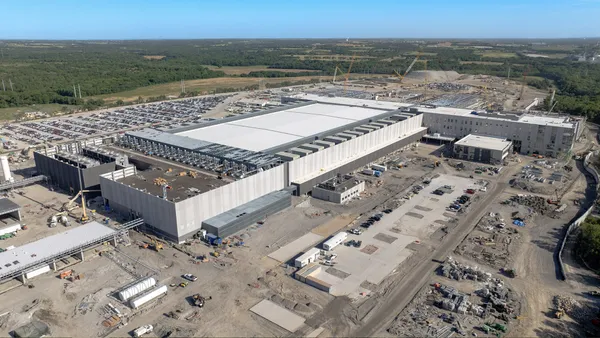Dive Brief:
- Each year following Minneapolis’ harsh winters and their accompanying freeze-thaw cycles, drivers face increasingly deteriorated conditions of concrete streets, with cracked expansion joints and the eventual and inevitable formation of potholes.
- Implemented last year and continuing in 2018, the city’s Concrete Street Rehabilitation Program uses concrete pavement preservation (CPP) techniques to rehabilitate and renew concrete pavement with the goal of extending the useful life of concrete streets, according to Equipment World's Better Roads. The process focuses on deteriorated areas within larger swaths of concrete pavements that are otherwise okay, and the completed repairs are viable for decades after completion. Techniques include slab stabilization, full- or partial-depth repair, cross-stitching longitudinal cracks and crack resealing.
- The city expects to repair three to four miles of concrete streets each year through the program, primarily in residential neighborhoods, a move officials anticipate will help stave off larger, more expensive reconstruction.
Dive Insight:
It’s no secret that the country’s roads are in disrepair, but a recent Vox report found that a disproportionate amount of funds are being spent on new roads versus repairing existing ones. New roads make up only 1 percent of the system, yet between 2009 and 2001, 55 percent of states’ road funds were spent on them. The report pointed out the safety and fiscal benefits of keeping up with repairs, noting that poor road conditions often play a role in traffic deaths and that roads are less expensive to fix while still in fair condition versus poor condition.
The use of CPP techniques has been on the rise since the economic downturn, according to the International Grinding and Grooving Association, as an alternative to more costly full reconstruction projects. IGGA told ForConstructionPros that such trends have a hidden benefit in demonstrating that concrete pavement can be serviceable beyond its initial design life, saving taxpayer dollars.
Along with cost-saving benefits, concrete preservation is a sustainable option, using lower-impact treatments and fewer virgin materials, conserving energy and reducing greenhouse gas emissions. It also can improve fuel efficiencies and reduce noise pollution.
Along with Minneapolis, other municipalities around the country are employing concrete preservation techniques to address aging infrastructure. In the master-planned community of Highlands Ranch in Colorado, officials began implementing repair procedures in two phases beginning in 2013 at a cost of $8.5 million. Ultimately, 66 lane-miles of concrete pavement were targeted with techniques including slab replacement, grinding and joint resealing.














